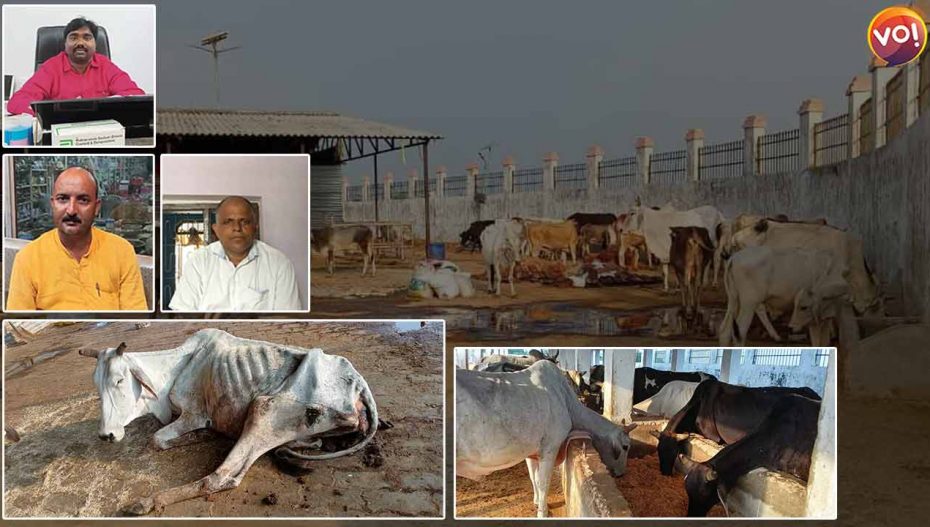In the state-run gaushalas of UP, it is becoming a challenge for the operators to look after and feed cattle at the government’s estimated rate of only Rs.30 per head of cattle per day.
Vibes Of India carried out a detailed investigation of the facilities available for the cattle in the gaushalas, as well as their transportation management, relative to the amount of government money allocated to spend on them.
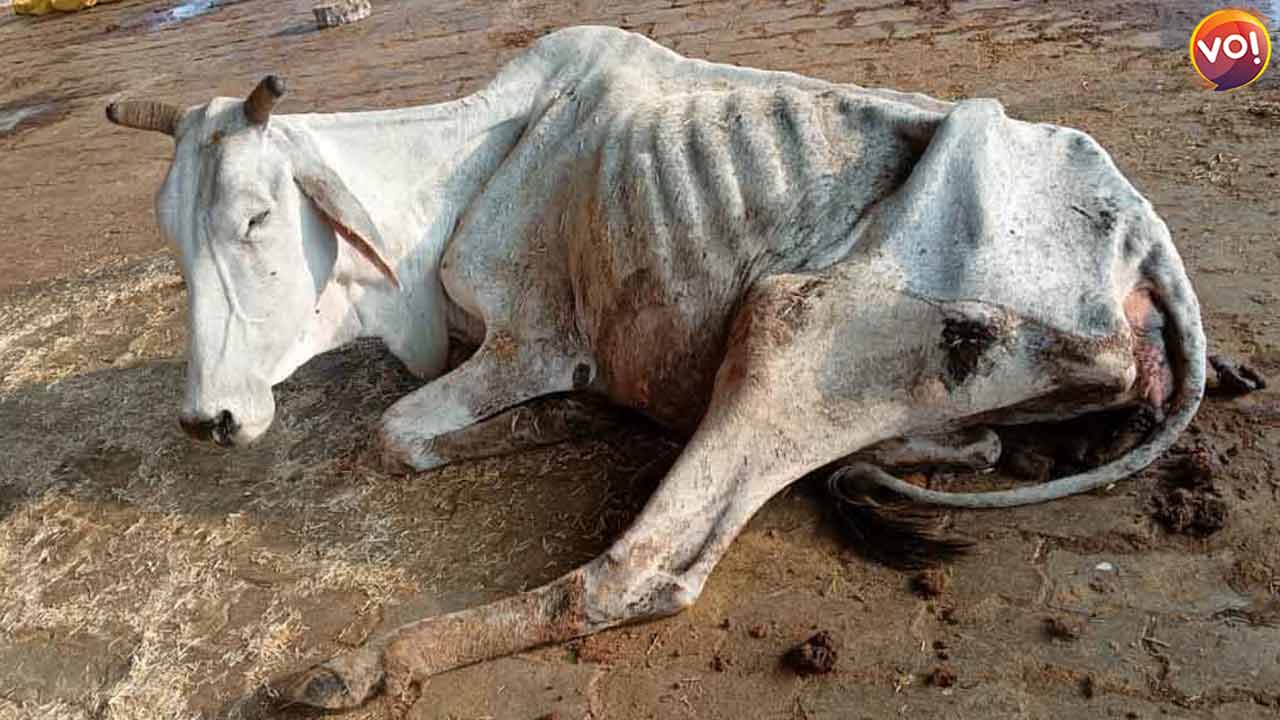
It is difficult for the operators of the state-run gaushalas to provide sufficient feed to the cows on the minimum amount that has been decreed by the state government for the provision of fodder and water for the cattle. Even those responsible for managing these gaushalas are acknowledging that at present, it is becoming a problem to look after the cattle on the rate of payment given by the government for a full day’s care.

In the district of Basti, Kanha Gaushala was set up in 2019 under the Rudhauli Nagar Panchayat. At that time, there were only some cows in the gaushala. But, as time passed, the numbers of cattle in this gaushala also kept growing. Dheersen Nishad, the chairman of Nagar Panchayat Rudhauli says, “In the gaushala’searly days, we had 75 cows here. Today, the number of cattle in the gaushala is around 135-140. Whereas the capacity of the gaushala is only 40.”
Dheersen Nishad tells us about the coming problems in managing the gaushala between the excess numbers of cows there, well beyond its capacity, and the increasing prices of fodder in these days of rising inflation. He explains that the price of hay has always fluctuated. “To purchase the hay, we issue a tender. Sometimes we buy the hay at Rs.700, and [at other times] at Rs.800, Rs.1,000, and Rs.1,200 rupees per quintal,” he says.

“The money released (paid) to us is equivalent to the number of cattle in the gaushala. We get Rs.30 per head of cattle. We have to feed them hay, green fodder (berseem, chari), and also grain (bran, Kapila cattle feed), all within that same amount of money,” he explains further. “Sometimes it has happened that 8-8 months have gone by without the money being released. Only after the District Magistrate was informed through a letter was the payment made. In such times, we face a lot of problems.”
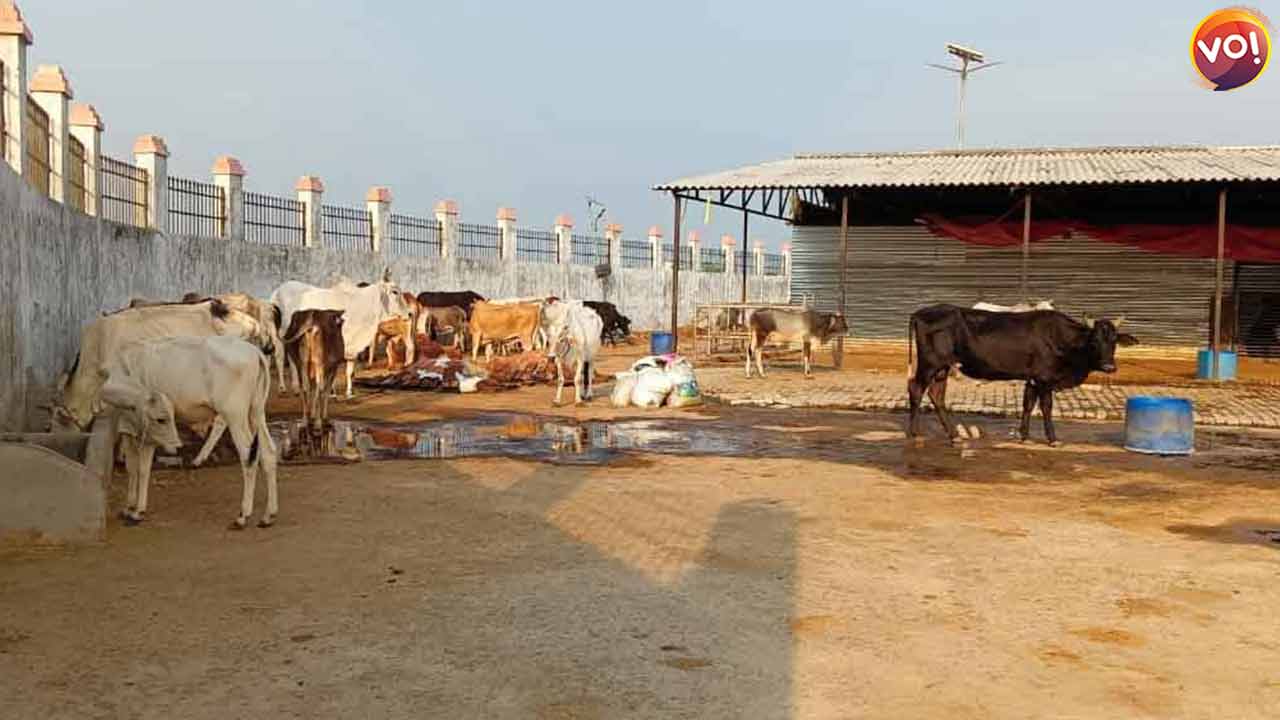
“Besides the fodder, we do not get paid for anything else. It seems to me that for running a gaushala, it would be better if the government increased the amount spent on one head of cattle from Rs.30 to Rs.50. That would make it better. We do not get any separate payment for taking care of the cattle in the gaushala. For this, Rs.5-7 lakh rupees should be made available annually for their welfare (management). We are sent monies from the District Magistrateonly once or twice in a year. Only for their feed. Many times there is a delay in payment, and then the District Magistrate has to be sent a written reminder,” said the Nagar Panchayat chairman to VO!, while appealing to the government for reform [to the system].
“Often times, people abandon their cows when their body has nothing left in it. Many cows in such a condition become aged or become ill, and die,” continued the Nagar Panchayat chairman. However, the Nagar Panchayat chairman did not accept that the death of cattle could be due to a lack of fodder.
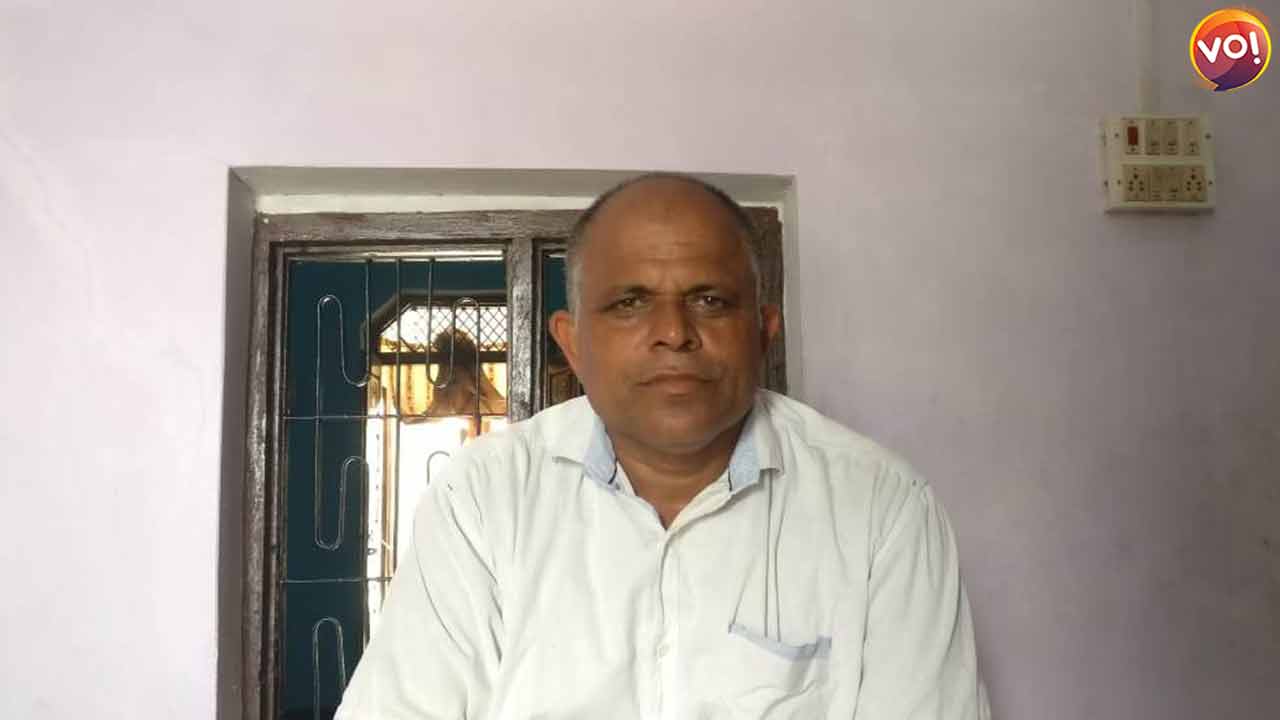
Social worker Rajesh Tripathi (53) explains, “The number of cattle in the gaushalas is more than two or three times their capacity. For the past several years, the Yogi government has allocated only Rs.30 rupees per day for arranging fodder for one head of cattle, while in the same past years, prices have also risen exponentially. In such a situation, any gaushala manager can face problems. The government should increase the budget that is spent on cattle in gaushalas.”
On the assurance of anonymity, an employee working in a government gaushala said, “Every month, 10-15 cattle are brought to gaushala here. Whereas 5-6 die every month. At times, some bigger cattle injure the smaller cows, which leads to their death.”
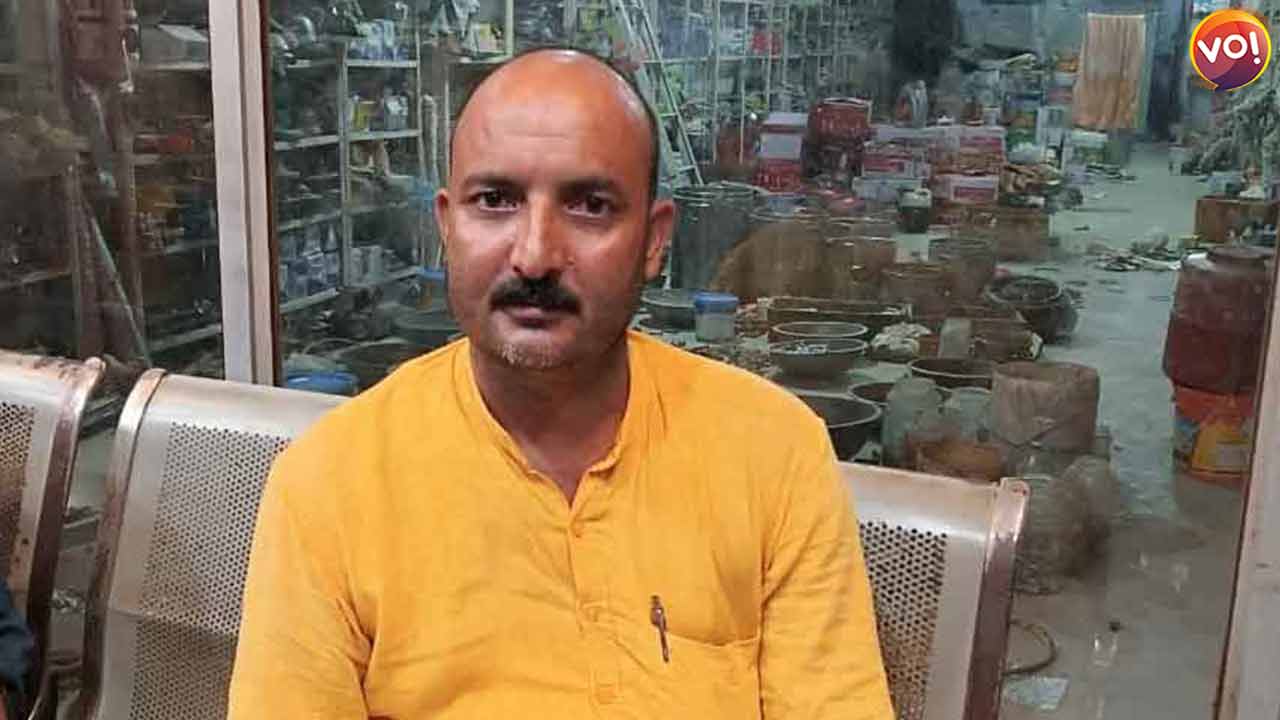
Vijay Narayan Tiwari is secretary of Ujjwal Seva Sansthan, an NGO, and president of Aami Bachao Sangh, an organization striving to keep rivers clean and pollution-free, as well as the BJP Mandal in-charge. He says, “The cattle in the gaushala are not being looked after in time, and they die because of carelessness on the part of those responsible for managing the gaushalas. The government alone is not to blame for these deaths or for the cattle roaming freely on the roads. Gau-palaks (cattle rearers) keep the cows with them as long as they give milk. When a cow stops giving milk, they leave her loose on the streets. Just as members of a family look after their aged elders until their last breath, in the same way, we shouldn’t abandon those cattle also, we should look after them.”
Is the government rate of Rs.30 adequate or inadequate per day per head of cattle? In response to this question, Vijay Narayan Tiwari says, “If administrators managing gaushalas are facing problems in feeding and looking after the cattle with the amount that has been fixed at present, then they should convey their concern to the government. The government will definitely consider it.”
On May 11, Rajeev Rai, national secretary, and spokesperson for Samajwadi Party posted a video of a gaushala in his village and tweeted, “This is a government gaushala in my villagePijda in Mau. Dozens of cows are dying of hunger every day here. Even the hay was swallowed up by the officials. Shameful indeed!”
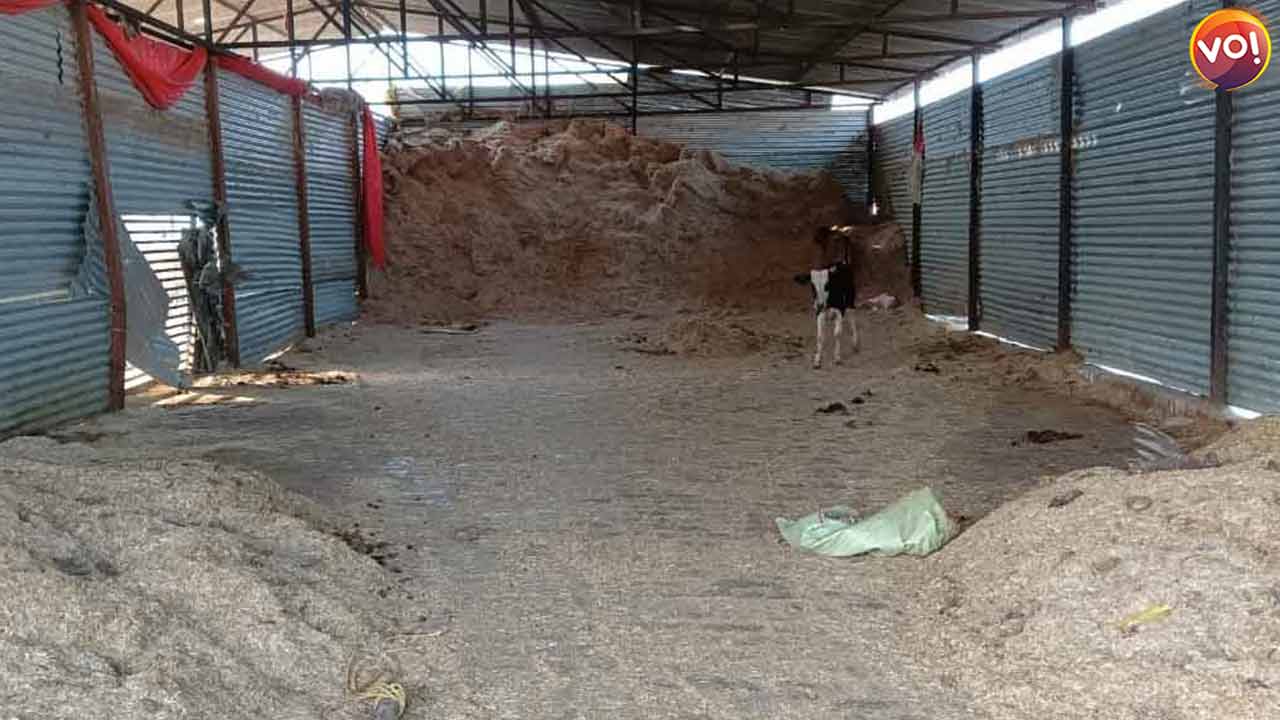
In 2019, during its first term, the Yogi Adityanath government allocated funds for gaushalas in the state budget and directed the district administrations and municipal corporations to make arrangements for cow shelters.
In the second term, on May 1, 2022, the UP CM Yogi Adityanath issued a statement directing that “a plan should be drawn to set up at the development block level, cow sanctuaries with a capacity of 2,000-2,500 cows. Arrangements should be made to keep the cows safe from the heat and sunlight. Proper provisions should be made for green fodder, straw, bran, water, etc. in the cow shelter sites.”
The UP government issues a daily allowance of Rs.30 per animal for gaushalas and temporary shelters. As per budget documents, in 2019-20, the UP government spent Rs.203 crore on shelters for and feeding of stray cattle, while the expenditure was estimated at Rs.300 crore for 2021-22.
Jai Prakash, additional director of the state animal husbandry department, said, “We have been running a special programme to deal with stray cattle since 1-20 January, under which around 90,000 animals have been sent to 5,500 gaushalas in the state. In all, at the present time about 850,000 cattle are staying in these facilities.”
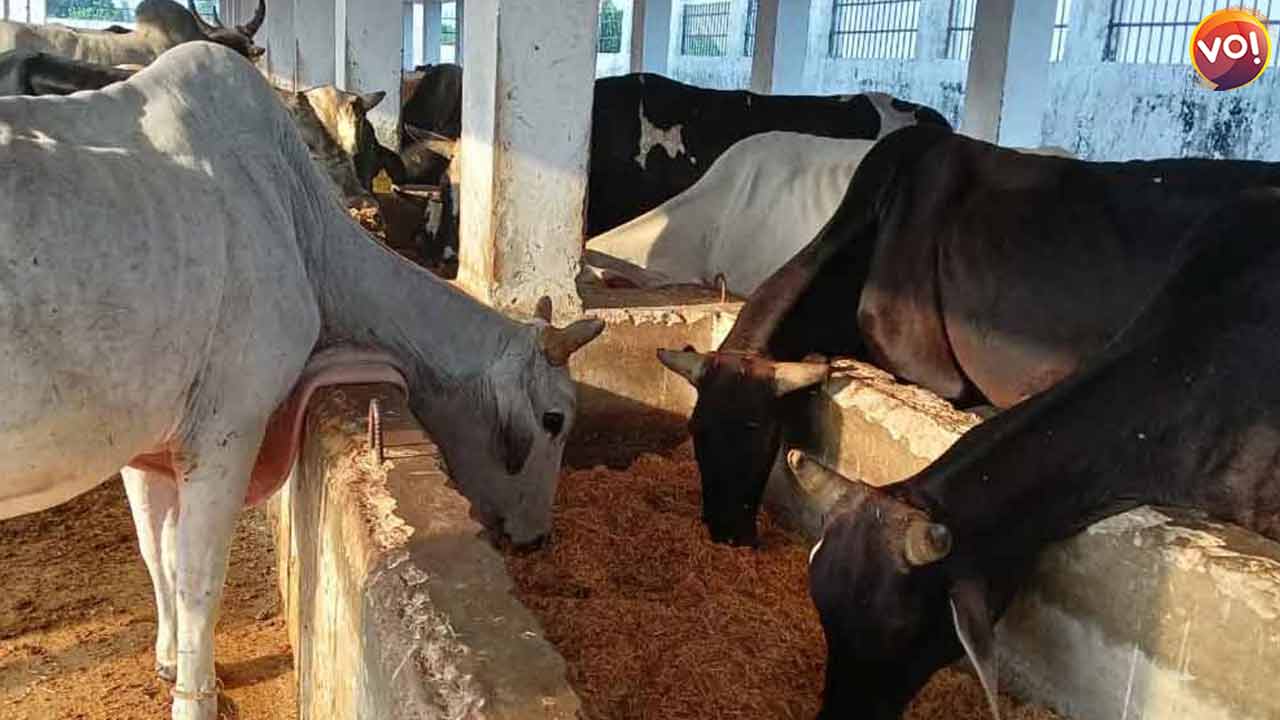
Consequences of restrictions on cattle trading
According to the 2019 livestock survey, there has been a 117% increase in stray cattle after Yogi Adityanath banned the cattle trade. There is no doubt that since the implementation of the cattle trade ban in the state, it is the farmers who have been facing the biggest threats from stray cattle. Whereas in the cities, people have been sustaining injuries in accidents involving abandoned cattle. The decline in animal trade has also apparently affected cattle rearers.
According to the 2019 Livestock Census data, the number of domesticated cattle in UP has declined by 2.75% between 2012 and 2019, even though it has increased by 1.3% on the national level. In contrast, the number of stray cattle in rural areas of UP has increased by 117%, from 495,000 in 2012 to 1.07 million in 2019. In an effort to deal with the problems being caused by the stray cattle, in September 2020, a Kisan Mahapanchayat in Muzaffarnagar, UP, also called for setting up an emergency helpline to report problems due to stray cattle. But this has not been heeded.


